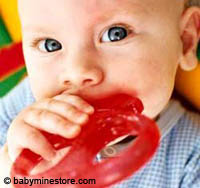Phthalates approved for floor coverings, but banned in toys
New regulations on the use of phthalates have given mixed messages on the safety of the controversial chemicals used to soften plastics. Phthalates give plastics - normally PVC - more flexibility. Products range from clothing to building materials, medical products, cosmetics, toys, and food packaging. The chemicals were first produced commercially in the 1920s, and have been produced in ever-increasing quantities since then. The worldwide production of phthalates in 2004 exceeded 400,000 tons. The chemicals are cheap to produce but have been linked to specific health risks, such as hormonal interference in rats and the development of allergies and cancers in children. The risks to children are the most concerning. While the results of scientific inquiry into phthalates have been somewhat inconclusive, with studies finding phthalates both safe and harmful, a question mark remains over their absolute safety. The inquiry opened in 1994, and by 1998, the CSTEE (Commission's Scientific Committee on Toxicity, Ecotoxicity and the Environment) issued an opinion, stating that phthalates should be banned. In 1999, the Commission adopted the recommendation, imposing a temporary ban. In 2003, a risk assessment report running to more than 300 pages by the European Chemicals Bureau into the DINP group of phthalates concluded that: 'There is at present no need for further information or testing or risk reduction measures beyond those which are being applied already,' or in other works, the DINP group of phthalates are essentially safe. A second report, a year later in 2004 but this time by the CSTEE, pointed out that the risk assessment did not take into account the possible effects of children ingesting phthalates when chewing toys, and so overturned the report, keeping phthalates banned in toys: '[T]he standard does need to be updated to reflect advances in the science since 1994. The standard does not take mouthing into account. This is now accepted practice.' The ban on objects that can be mouthed came into effect in 2005, effective for, 'toys and childcare articles which can be placed in the mouth by children'. The Commission's conclusions of 13 April cover the phthalates DINP and DIDP, and state that they are safe for all uses except children's toys and childcare articles. For phthalate DBP, the Commission placed additional limits on workers' exposure. The director of umbrella group the European Council for Plasticisers and Intermediates, Dr David Cadogan said: 'At a time when the regulation of chemicals is high on the EU political agenda, the results of the EU's risk assessments on these phthalate plasticizers are a reminder that risk assessment can provide both the consumer and policymaker with confidence in the use of even the most politically charged chemicals.' However, the story does not end here. Groups such as Greenpeace are lobbying hard for a ban, which could still come, as what could constitute something which could enter the mouth of a child has yet to be defined, as is the fate of other families of phthalates.



